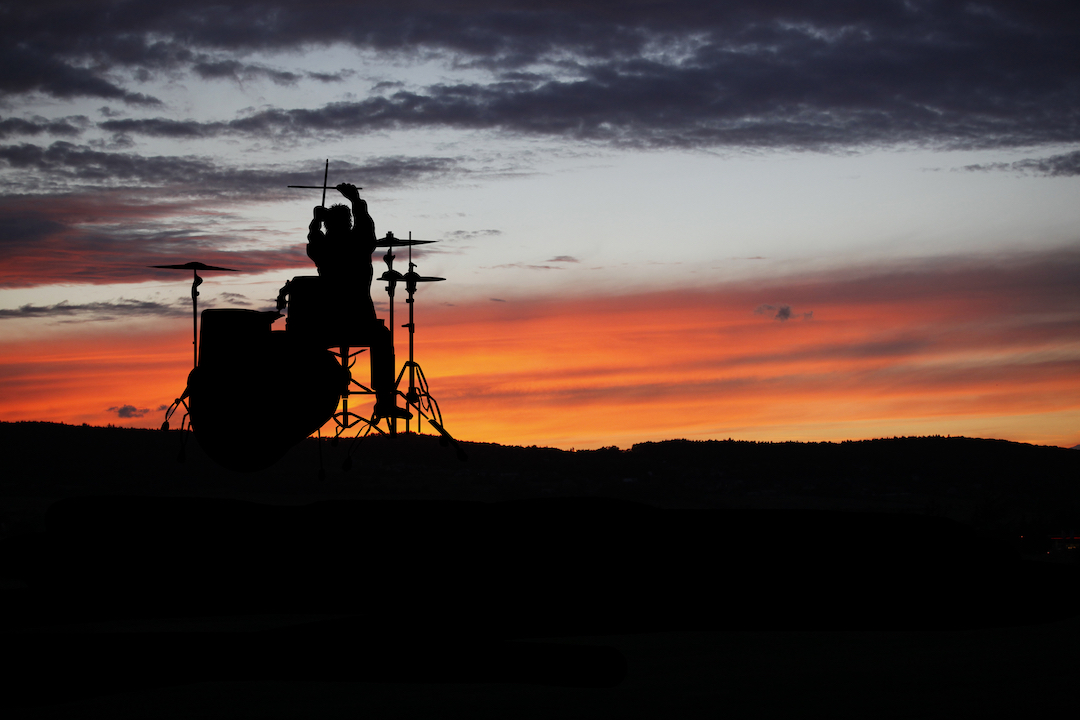Letting Some Air In: The Benefits (and Challenges) of Outdoor Recording

Outdoor recordings can sound surprisingly good, and can bring a sense of organic spontaneity to your productions. Learn how to overcome the challenges and reap all the benefits below.
The emphasis on building deadened rooms for recording music has always struck me as a good metaphor for why far too many recordings end up sounding lifeless.
Though overdubbing recordings allows you to layer sounds, these layers lack the sympathetic overtones that can only be created when elements share space and resonate with one another organically.
For more than two decades, I have mostly foregone traditional studios in favor of recording mobile—be that in city or countryside.
When considering recording outside of “planned spaces”, many are afraid of ambient sounds intruding, but the reality is that:
1. All sounds but those with sharp peaks (such as horns, shattering glass, coughs and foot squeaks) will end up being masked by the primary sound you are aiming to record.
2. In best case scenarios, the surrounding sounds actually synchronize with the music and become a texture in the larger portrait. Children and animals, in particular, are almost always sympathetic to the music—in time and in tune.
What clinical recordings lack are the sounds that are suggested, but not entirely there. Whatever the listener imagines is happening can be every bit as important as that which actually is happening.
Too often, engineers and artists spend too much of their time monitoring for the wrong things—”mistakes” that others won’t notice, versus the impact of whether the emotion is being conveyed or not.

Ustad Saami recording on his rooftop. When ideal recording studios aren’t available, a good outdoor space can often sound much better than a compromised indoor one. Photo by Marilena Delli.
Master vocalist Ustad Saami from Pakistan practices an ancient 49-note microtonal scale, rather than the mere 7-note scales we are used to in the West. This master singer preaches that “to sing is to listen.”
But the complexity that he embraces has led engineers in traditional studios to tell them that he is singing “wrong” or “off-pitch”, since they cannot find and align his music on their preset software grids.
This is yet another sobering case of people increasingly deferring to the authority of computers rather than the tangible evidence of real magic happening right before them.
The Principles of Recording Out in the Open
Some primary benefits of outdoor recording are:
1. Wide open spaces can provide about as non-reflective an environment as is possible. The only reflective surfaces present are the ground (which may even be relatively soft and absorbent), as well as any distant structures (a grove of trees, buildings), and the performers themselves.
2. The benefits of sunlight and oxygen are too often lost in windowless studios that can seem more like nuclear silos. Natural light and air feed performers energy, and the majority of the time, energy trumps precision. (The “Louie, Louie” phenomenon).
Some primary pitfalls of outdoor recording are:
1. Wind is certainly enemy number one. Fortunately, this element can be mitigated with some proper wind screens—not foam, but of the furry kind. This relatively minor expense (in the $30-50 range per microphone) can make or break any project. Whether a world-class vintage mic or an SM57, once any wind gets in, the whole endeavor is unsalvageable.
Here are a few tips that can help with recording guerrilla-style in dynamic versus static environments:
1. Somewhat counterintuitively, artists should face any source of sound—such as roads or crowds. That way the mics are not receiving any of those sounds directly.
2. Close-mic’ing is the equivalent of holding a small object up close to your field of vision. You’ll notice that the object you are holding close to your eye will be able to literally block out skyscrapers or mountains in the distance. In audio, as in vision, it’s all about perspective. Whatever sound is loudest and closest will often render the others invisible.
3. Whenever possible, pointing mics upwards eliminates reflection from the ground. The greatest compliment is when someone is not able to tell that something was recorded outdoors, particularly if they are someone with golden ears like John Golden (who I have had the honor to work on records with since 1987) and his fifty-plus years of mastering experience. Even better is when someone refuses to believe that something was not recorded in a formal studio.
A veteran Brazilian percussionist and engineer recently argued that a vocal recording on a project from Malawi could not have possibly been done outdoors. His disbelief was due to the rich reverb present. What he failed to realize was that the reverb was deliberately coaxed from the environment itself. The singers had huddled under a giant Baobab tree (the oldest living species in Africa, whose life can span 2,500 years) to use very “old school” echo indeed.
Ian Brennan is a Grammy-winning producer (Tinariwen) who has produced three other Grammy-nominated albums (Zomba Prison Project, Peter Case, Ramblin’ Jack Elliott) and published four books. His fifth book, Silenced by Sound, will be published in the fall 2019. His latest project is 75-year-old Ustad Saami’s debut album, God is Not a Terrorist, on Glitterbeat Records.
Please note: When you buy products through links on this page, we may earn an affiliate commission.







[…] http://sonicscoop.com/2019/02/27/letting-some-air-in-the-benefits-and-challenges-of-outdoor-recordi… Letting Some Air In: The Benefits (and Challenges) of Outdoor Recording […]